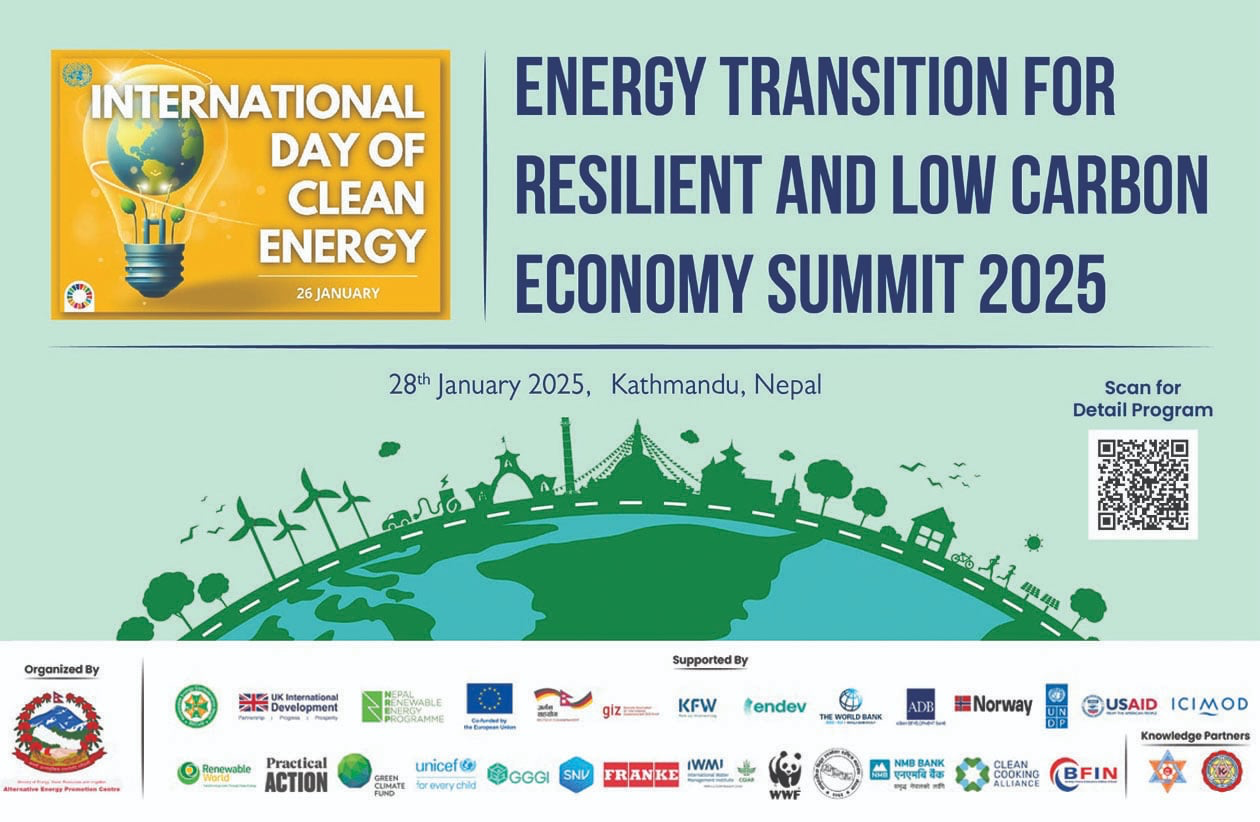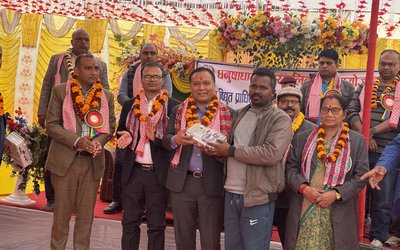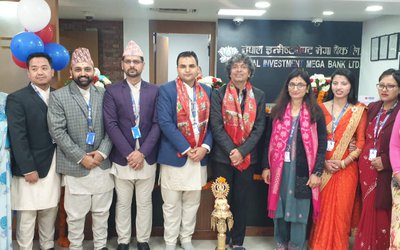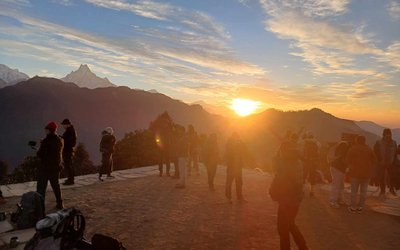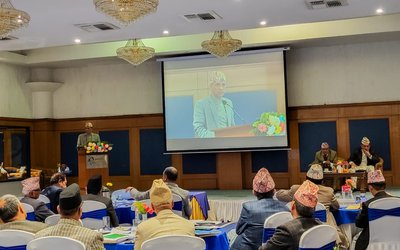
Minister for Foreign Affairs Pradeep Kumar Gyawali recently launched the Human Development Report 2020 in the presence of representatives from the government, development partners, civil society organizations, private sector and the media.
Although Nepal has made progress in Human Development Index (HDI), with 0.587 in 2019, the risk remains given the COVID-19 pandemic. Nepal improved the position up from the index of 0.579 in 2018.
Published by National Planning Commission, the report shows that in the past three decades, Nepal gained from 0.378 in 1990 to the present status of the HDI.
The reports pointed out that it still failed to achieve a notable growth in per capita income, hindering the country from getting promoted from its current status of least development, reads the report with the theme ‘Beyond Graduation: Productive Transformation and Prosperity.’
The report commends Nepal for making ‘notable progress in human development’ but also warns that the COVID-19 crisis could reverse the achievement if not responded effectively. The report recommends implementing a comprehensive relief package accompanied by a medium to long term strategic plan to mitigate the crisis and build resilience.
According to the report, persisting inequality in human development in various regions of the country remains higher. The report shows that HDI status in urban areas stands at 0.487, it is 0.431 in rural areas. Bagmati Province is at the highest level with a HDI of 0.502. Karnali Province has the lowest HDI of 0.375.
“For three decades, Human Development Reports have fundamentally shaped the ideas and policy discourse on alternative assessment of development and wellbeing. The criteria used for measuring human development have been the basis for advancing social development agenda, including in Nepal. The contents of the HDR reports have served as useful policy resources for many countries,” said minister for foreign affairs Pradeep Kumar Gyawali while launching the report.
“Successive human development reports since 1990 have highlighted critical dimensions of human progress and sustainable development, thereby informing, encouraging and assisting the Governments and stakeholders to address the impediments in the way of enlarging choices. They have also widened the conceptual foundation of human development as a capability to lead life one values the most.”
Over the years, the very concept of human development has evolved and adapted considerably to encompass newer elements and dimensions that expand human wellbeing, freedoms, and choices. This year, the report heralds an epoch-making transformation that has taken place in the inter-relationship between humans and nature, and signals humans’ entry into an uncharted territory of Anthropocene- where humans shape the future of the planet, not the other way round.
Conceptually, it develops a new planetary-pressure-adjusted-human-development-index (PHDI) and gives HDI a new dimension of accounting the impact a country makes to the planet.
Member of National Planning Commission Krishna Prasad Oli, former Finance Minister Dr. Yuba Raj Khatiwada, Executive Director of Global Climate Fund YannickGlemarec, EU Ambassador Nona Deprez, UNDP Resident Representative Ayshanie Medagangoda-Labe, UNDP Deputy Resident Representative Bernardo Cocco, Director General, International Centre for Integrated Mountain Development Dr.Pema Gyamtsho, Chair of Federation of Community Forestry Users Nepal Bharati Pathak, Social Worker and youth leader Sapana Roka Magar joined the function and spoke at the live cast from Facebook.
The report was also launched in all seven provinces by the chief ministers of the respective provincial governments. Addressed by over 40 speakers, these eight events were attended by over 1000 people from across the country virtually.
This year marks the 30th Anniversary of the first Human Development Report and of the introduction of the Human Development Index (HDI). The HDI was published to steer discussions about development progress away from GPD towards a measure that genuinely “counts” for people’s lives. Introduced by the Human Development Report Office (HDRO) thirty years ago to provide a simple measure of human progress – built around people’s freedoms to live the lives they want to - the HDI has gained popularity with its simple yet comprehensive formula that assesses a population’s average longevity, education, and income.
Over the years, however, there has been a growing interest in providing a more comprehensive set of measurements that capture other critical dimensions of human development. To respond to this call, new measures of aspects of human development were introduced to complement the HDI and capture some of the “missing dimensions” of development such as poverty, inequality and gender gaps. Since 2010, HDRO has published the Inequality-adjusted HDI, which adjusts a nation’s HDI value for inequality within each of its components (life expectancy, education and income) and the Multidimensional Poverty Index that measures people’s deprivations directly.
Similarly, HDRO’s efforts to measure gender inequalities began in the 1995 Human Development Report on gender, and recent reports have included two indices on gender, one accounting for differences between men and women in the HDI dimensions, the other a composite of inequalities in empowerment and well-being. This briefing note is organized into six sections. The first section presents information on the country coverage and methodology for the 2020 Human Development Report.
The next five sections provide information about key composite indices of human development: the HDI, the Inequality-adjusted Human Development Index (IHDI), the Gender Development Index (GDI), the Gender Inequality Index (GII), and the Multidimensional Poverty Index (MPI). The tables presented in this note depict the state of human development before the COVID-19 pandemic based on available data for 2019 and earlier years.
Data reflecting changes caused by the COVID-19 pandemic and its socioeconomic fallout in 2020 will be available in 2021 and will be presented in tables and related analyses of the 2021 Human Development Report. It is important to note that national and international data can differ because international agencies standardize national data to allow comparability across countries and in some cases may not have access to the most recent national data.
The 2020 Human Development Report presents the 2019 HDI (values and ranks) for 189 countries and UN-recognized territories, along with the IHDI for 152 countries, the GDI for 167 countries, the GII for 162 countries, and the MPI for 107 countries.
It is misleading to compare values and rankings with those of previously published reports, because of revisions and updates of the underlying data and adjustments to goalposts.
Small changes in values should be interpreted with caution as they may not be statistically significant due to sampling variation, the report cautions. “Generally speaking, changes at the level of the third decimal place in any of the composite indices are considered insignificant. Unless otherwise specified in the source, tables use data available to HDRO as of 15 July 2020.”
All indices and indicators, along with technical notes on the calculation of composite indices, and additional source information are available online at the Global Human Development Report 2020, a flagship publication of the United Nations Development Programme (UNDP).
- VIST OF THE DUKE AND DUCHESS OF EDINBURGH TO NEPAL: Celebrating The Historical Ties Between The Two Nations
- Feb 11, 2025
- ADB’S SUPPORT: Protection Of Vulture
- Feb 11, 2025
- COMMEMORATION Of THE HOLOCAUST: Honoring The Victims
- Feb 11, 2025
- ECONOMY: Inflations At 5.41
- Feb 11, 2025
- NEPAL’S ENERGY SECTOR: Facing Crisis
- Jan 28, 2025
